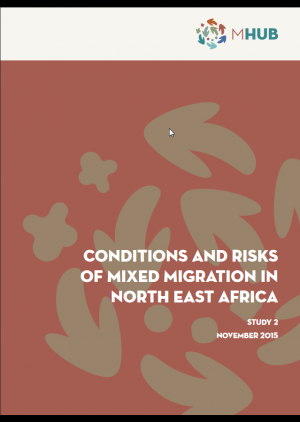Description
This report focuses on the conditions and risks of migration in Ethiopia, Sudan and Egypt. In particular, it focuses on the experiences of people who are on the move. The pattern of migration in this region is complex. No evidence was found to support the idea that large numbers of people are leaving their countries of origin with the intention of reaching Europe. The idea of crossing the Mediterranean to Europe often arose from disappointment at the conditions in neighbouring countries. Many migrants, refugees and asylum seekers target regional employment markets, such as Khartoum, or the closest options for protection, such as Cairo. There is substantial circular migration and intra-regional networks. Onward movement took place when these strategies failed to address protection needs or livelihood strategies and sometimes resulted in additional vulnerability to human rights abuses. Research in Europe (Malta and Italy) was focused on interviews with almost 100 migrants, asylum seekers and refugees about their experiences before reaching the Mediterranean, so it does not consider direct EU policy responses to the sea crossings. Individuals interviewed for the report recount details of crossings of 10 separate border points between Ethiopia, Sudan and Egypt, but also between Ethiopia and Sudan and Eritrea and Sudan and Libya. These crossing points vary very substantially in terms of the numbers of people crossing, the need for facilitators and the nature of the populations making the crossing.
Content:
- INTRODUCTION
- THE CONTEXT OF MIXED MIGRATION IN NORTH EAST AFRICA
- METHODS USED IN RESEARCHING THIS REPORT
- POLICY CONTEXTS
- MAPPING ROUTES AND RISKS ACROSS NORTH EAST AFRICA
- PROTECTION AND ASSISTANCE ISSUES ON THE ROUTE
- SPHERES AND SOURCES OF INFORMATION
- RESPONSES: ROLE OF STATE AUTHORITIES/IOS AND NGOS
- CONCLUSIONS
Region/Country (by coverage)
Publisher
MHUB
Project Type
